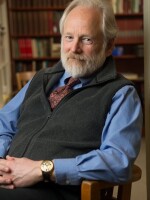“People wouldn’t be in such a hurry to get off the grid,” observed my elderly neighbor, “if they knew how long it took to get on it.”Indeed. Although Vermont cities got electricity by the early 1900’s, it took a lot longer to light the countryside. In 1920, roughly ten percent of Vermont farms had electricity. By 1930 it was still only one in three.
It just wasn’t cost effective for private utilities to extend power beyond city limits. That began to change in 1935, when Congress created the Rural Electrification Administration, authorizing federal loans to non-profit cooperatives extending power to the back country. Within a decade almost ¾ of Vermont farms had been hooked up.
But not all of them. Electricity didn’t reach our road in Thetford until 1947 – and even then it was hit-or-miss. The government ran lines to your property for free, but you had to wire your buildings yourself or get someone to do it for you – and that wasn’t cheap. Most people wired milking parlors first and then ran a line to the house to get lights, refrigerator, clothes washer, and a radio – joining the 20th century. But our house was occupied by a bachelor content to extend 18th century life well into the 1950’s – lighting by kerosene, heating and cooking with wood, and doing without indoor plumbing.
He wasn’t alone. The last two Vermont towns to get electricity were Granby and Victory, both in 1963, almost thirty years after rural electrification began.
I try to remember this when I hear claims that we have universal Broadband in the Green Mountain State. As many Vermonters know, if you live in a narrow valley, deep in a hollow, in a gore, or anywhere else it’s not cost-effective for internet providers to extend service, you don’t have – and won’t easily get - what’s readily available to most of the state. Some of my neighbors are still on dial-up.
In relation to Broadband, parts of my neighborhood today are where they were in relation to electricity in the late 1940’s. It’ll get here eventually but, boy, it’s slow. We didn’t join the 20th century until it was half over and it looks like the same may be true of the 21st.




